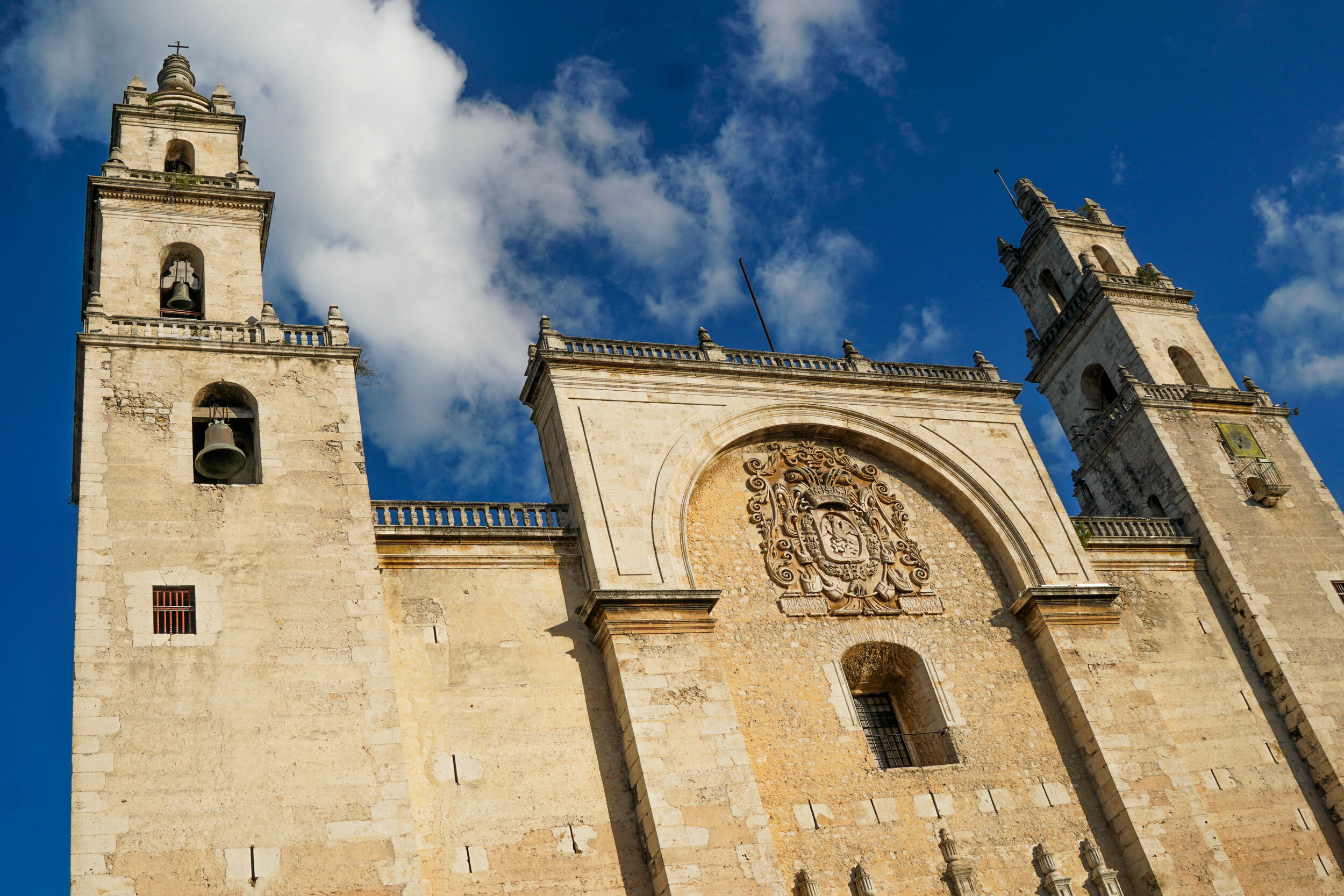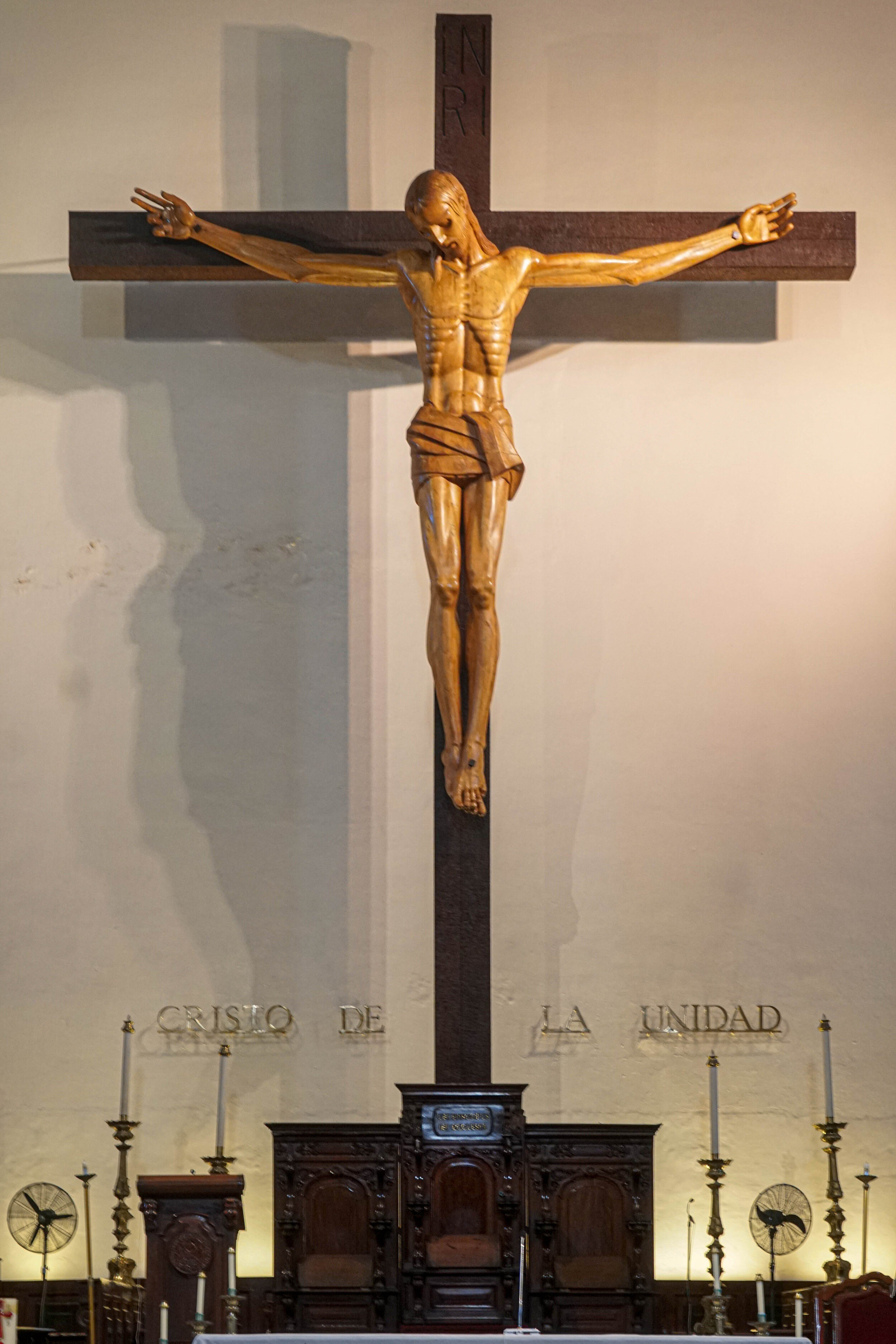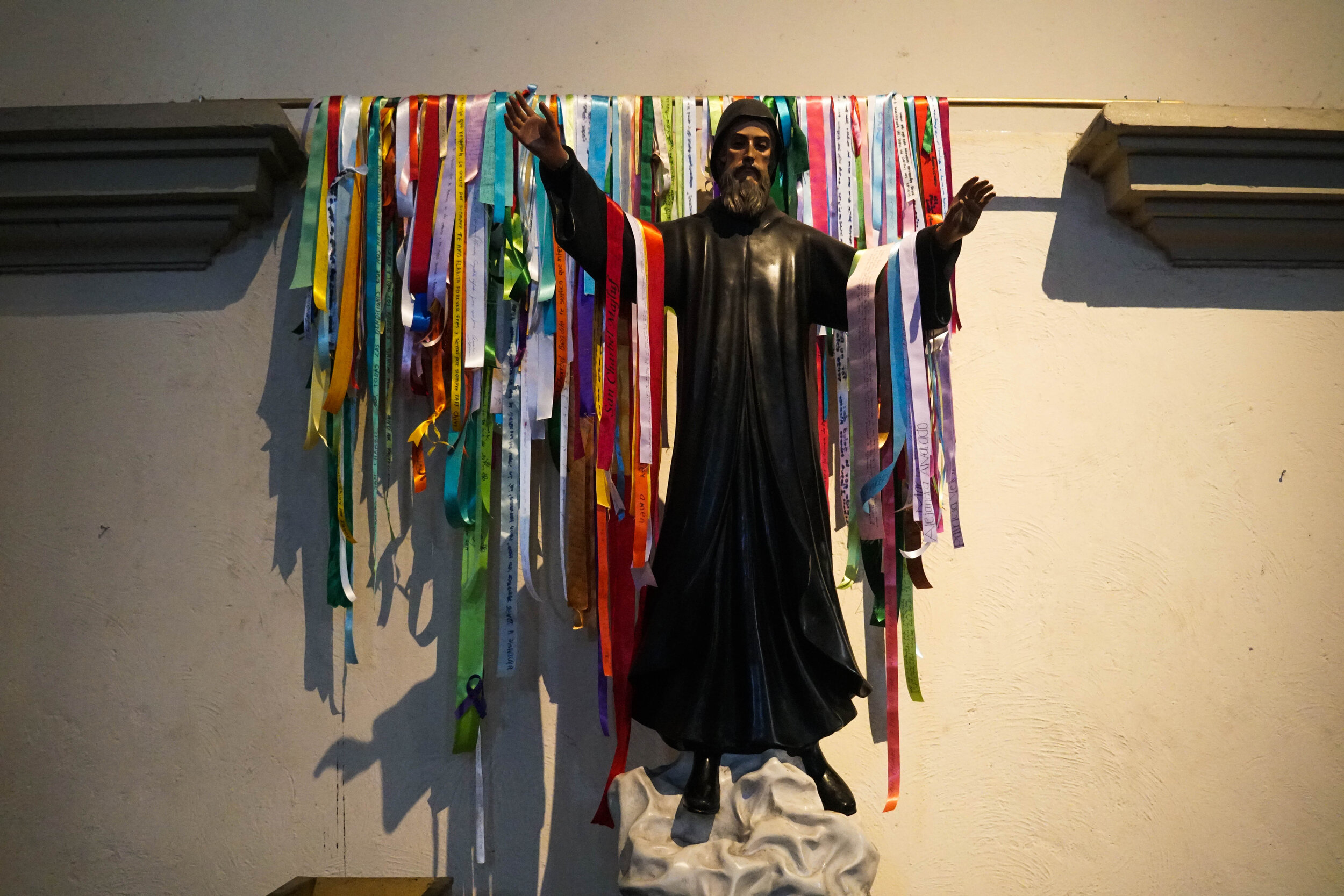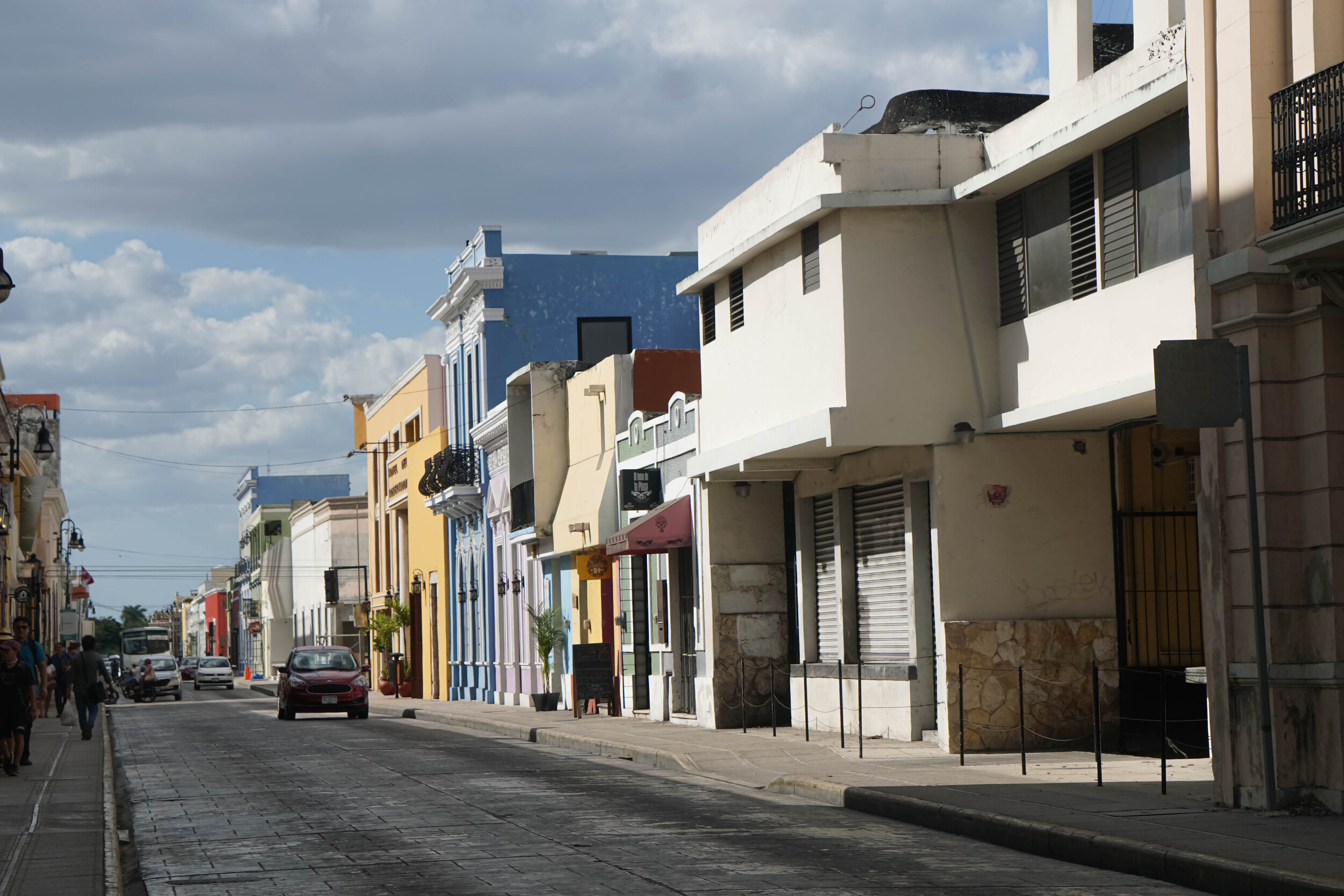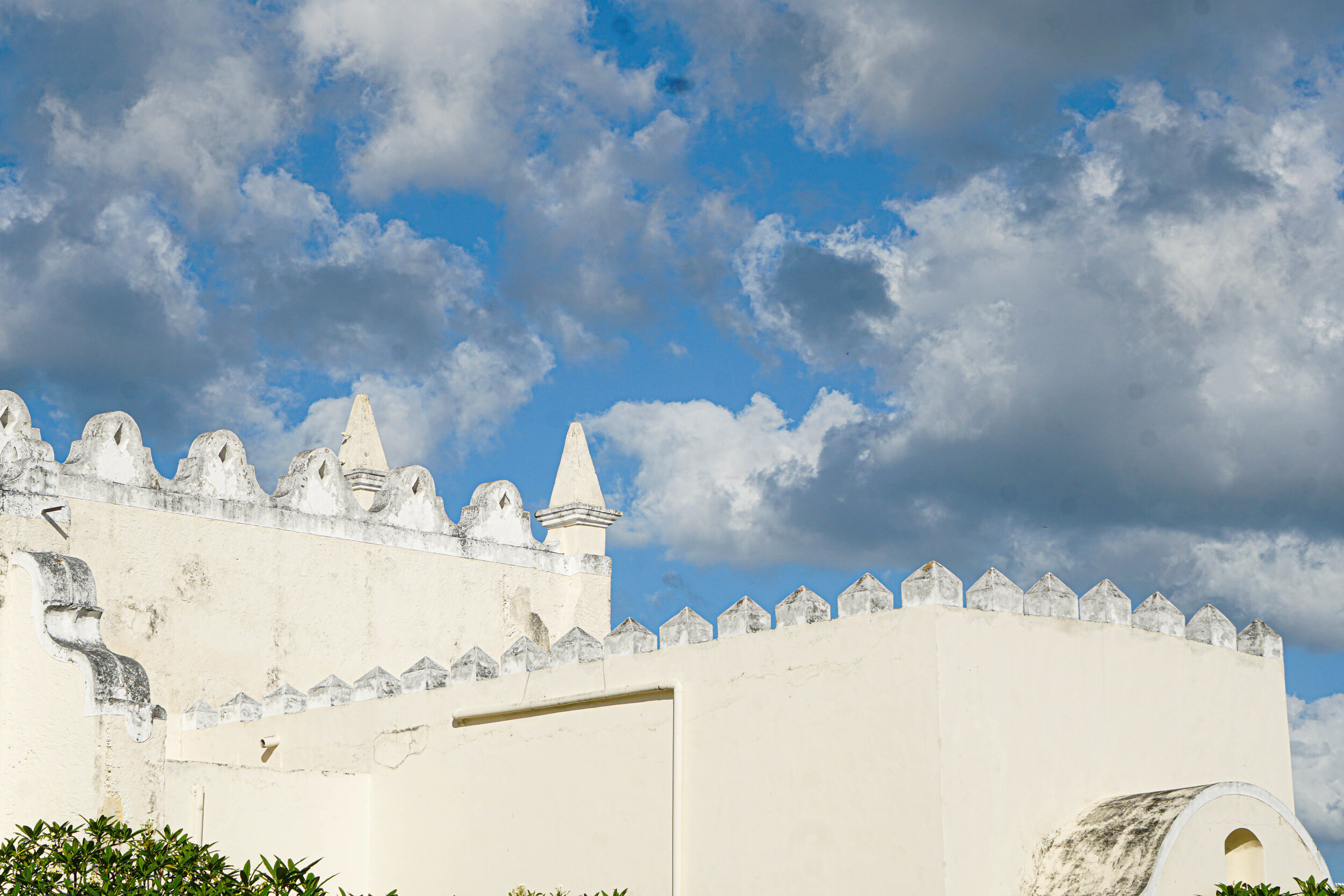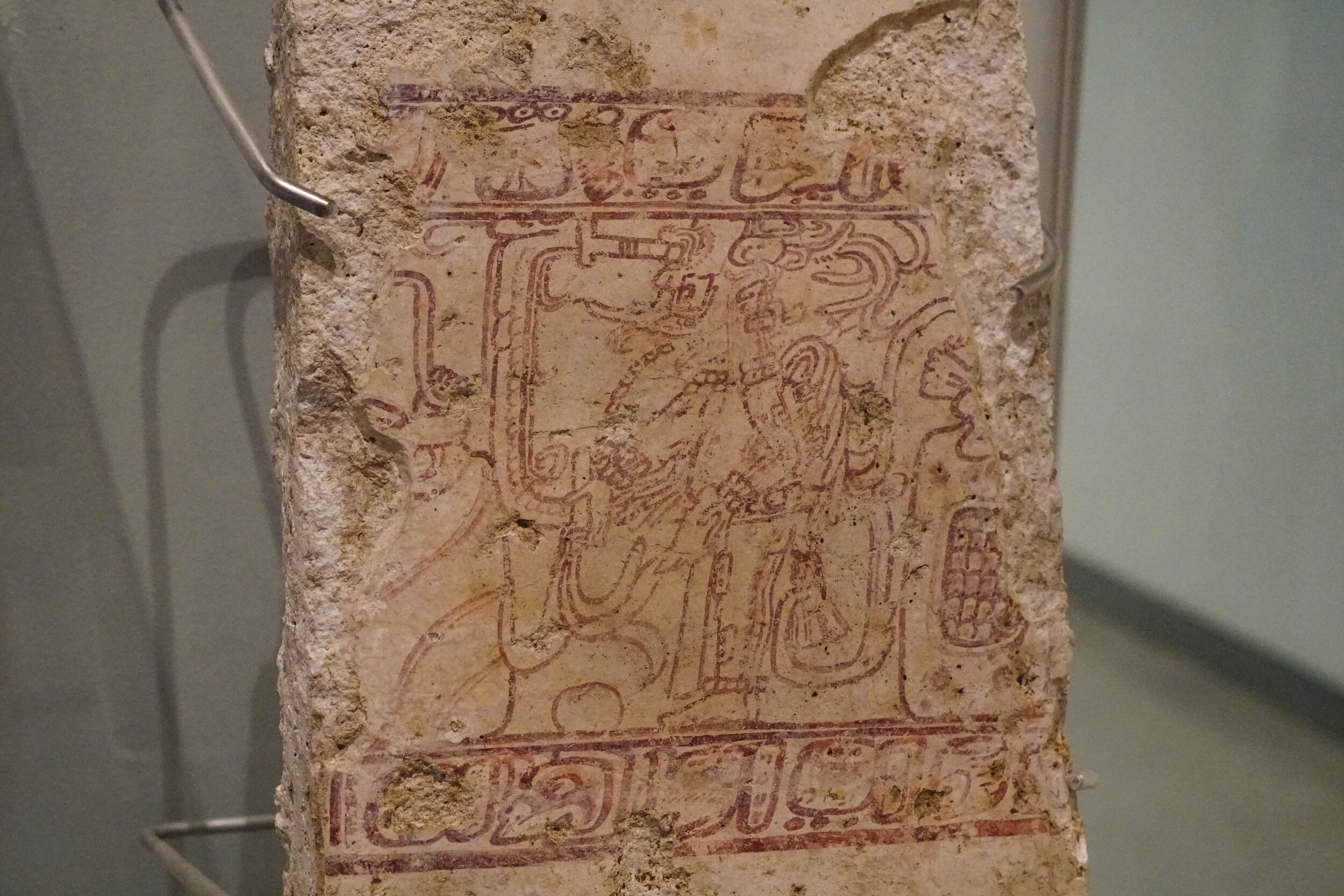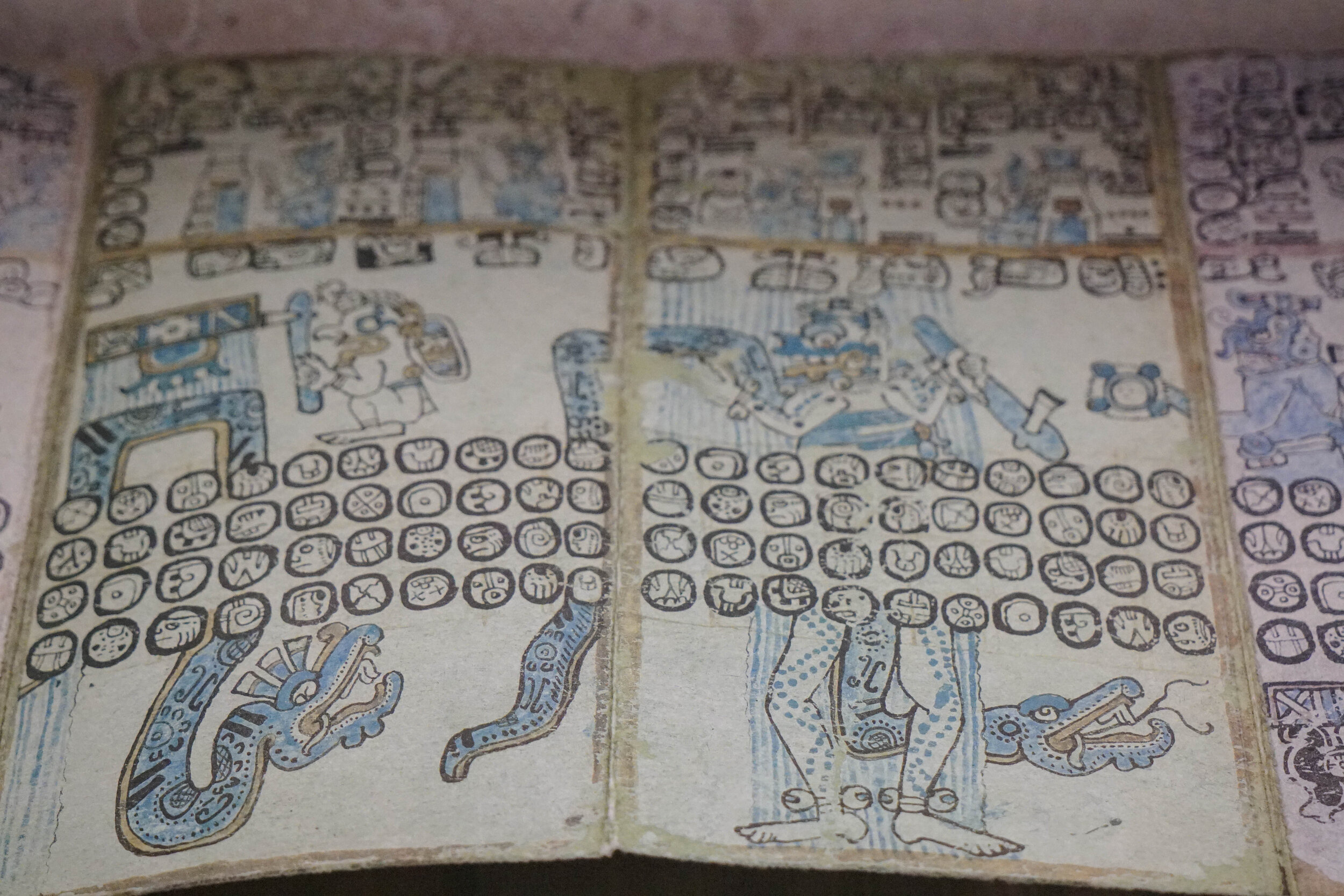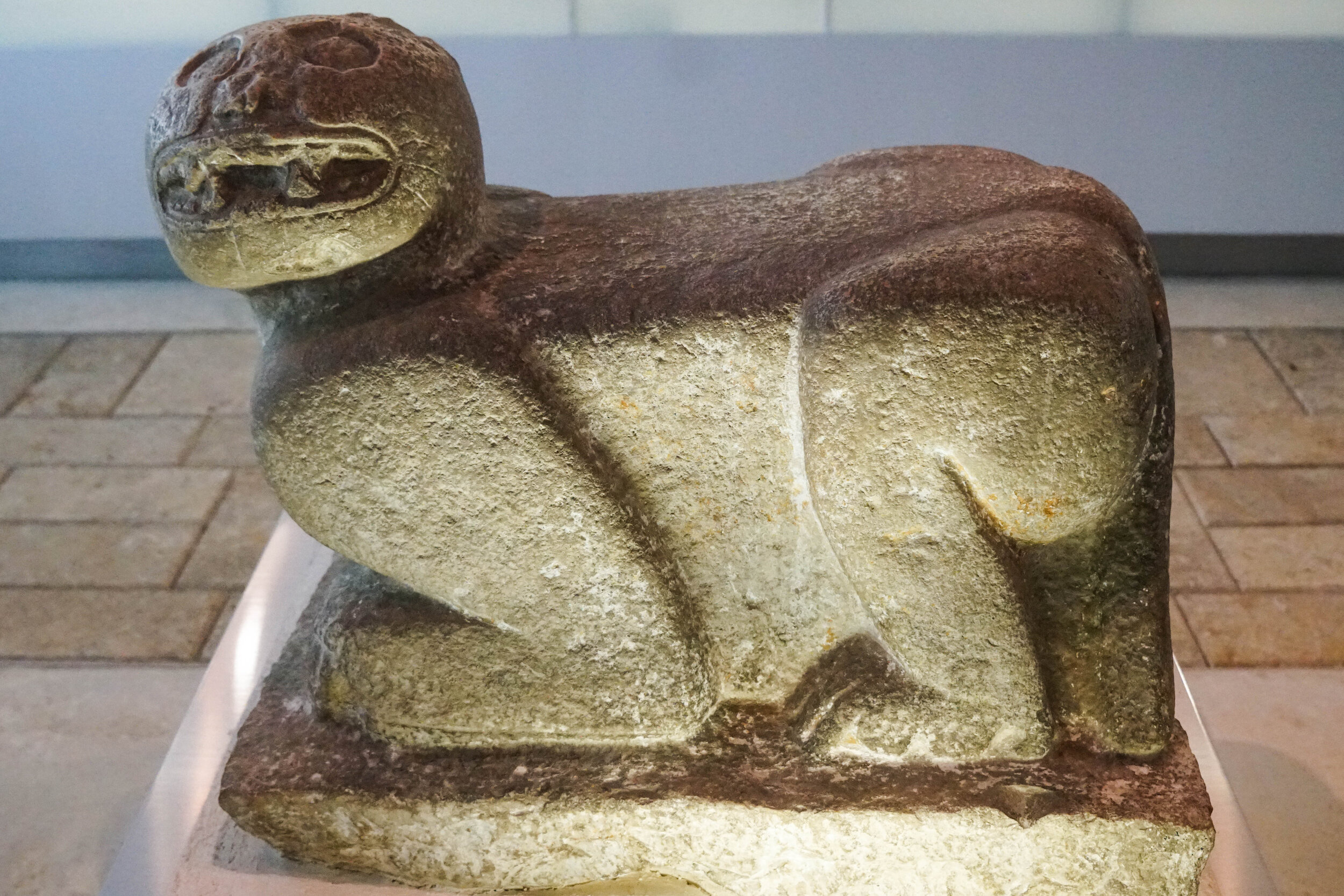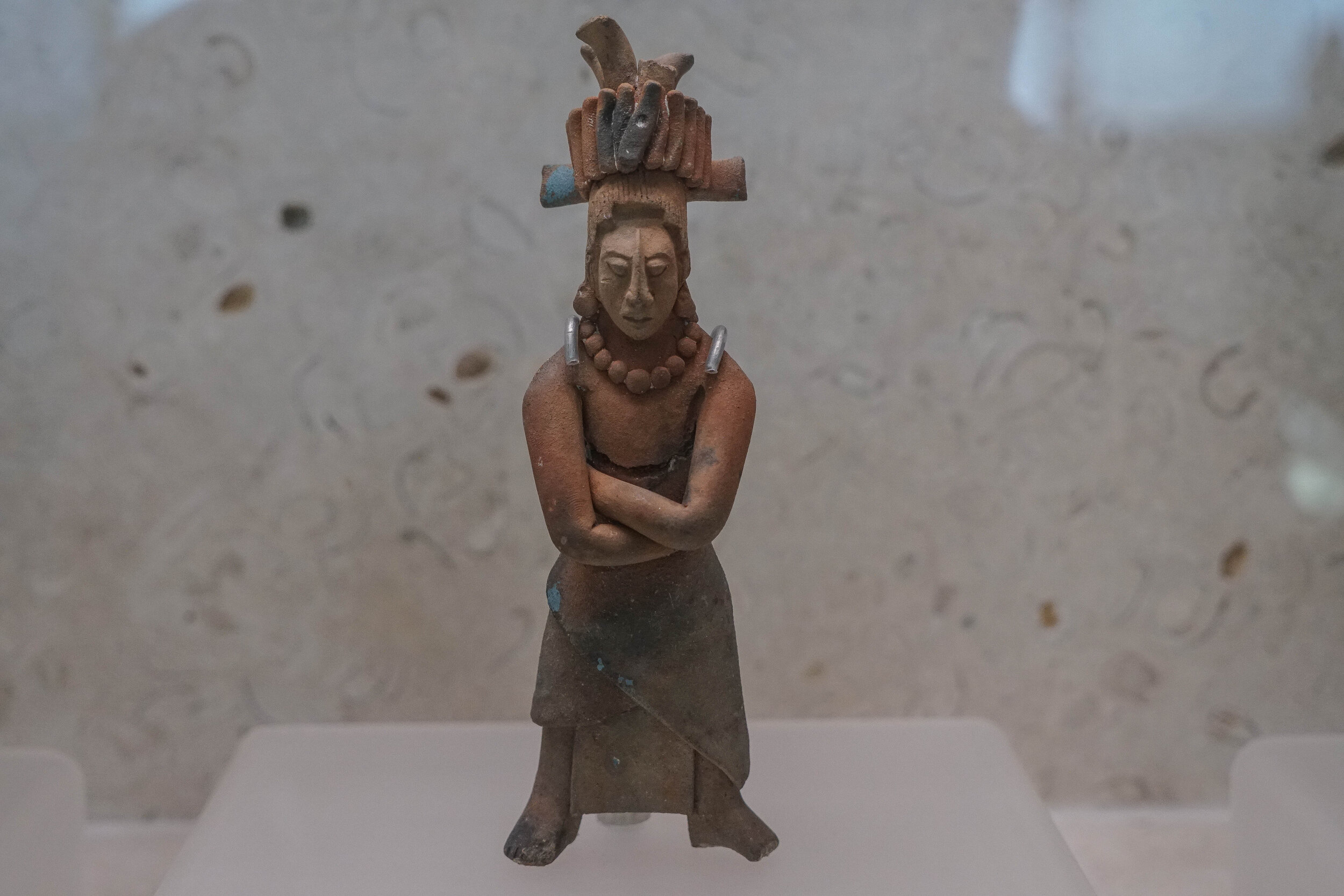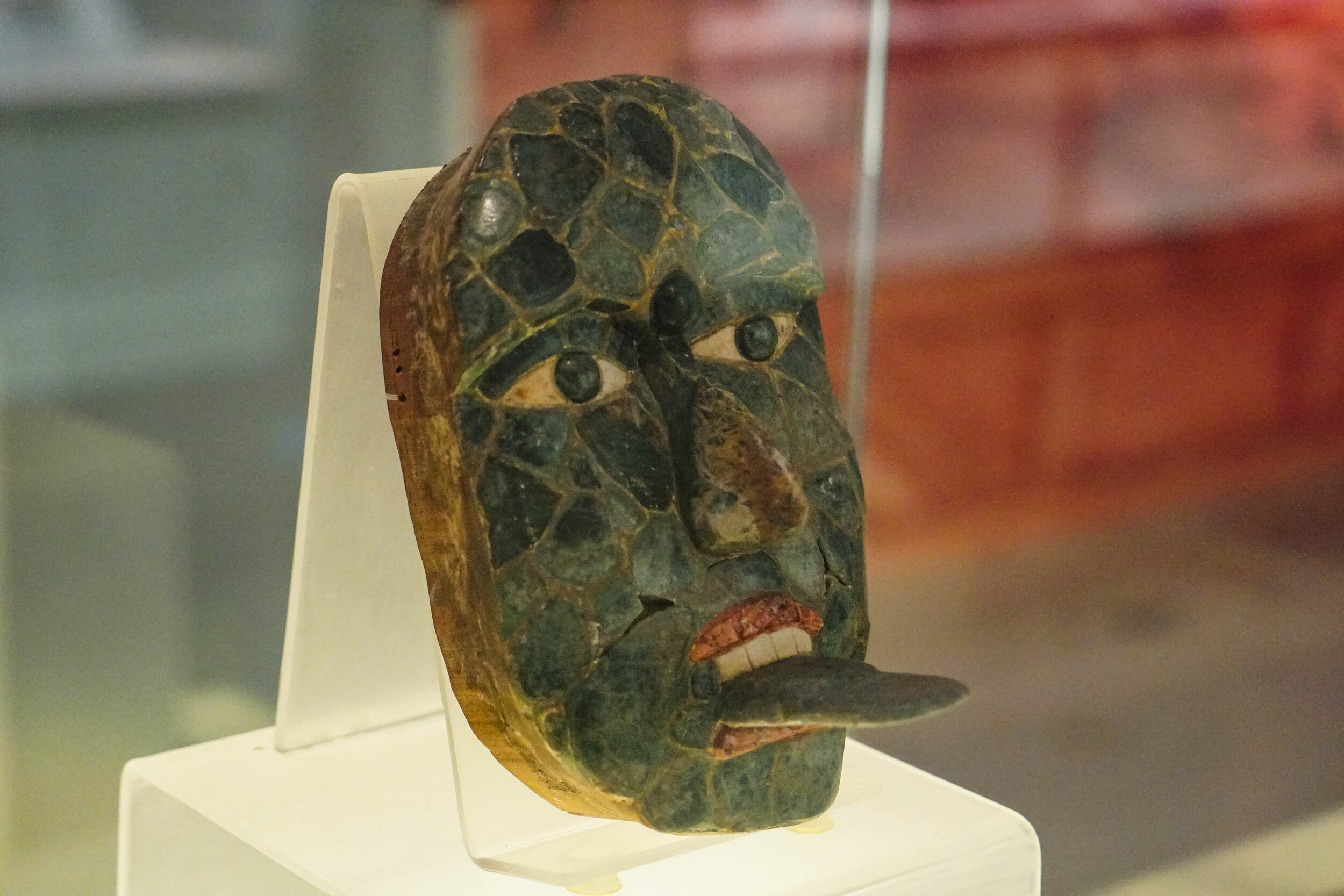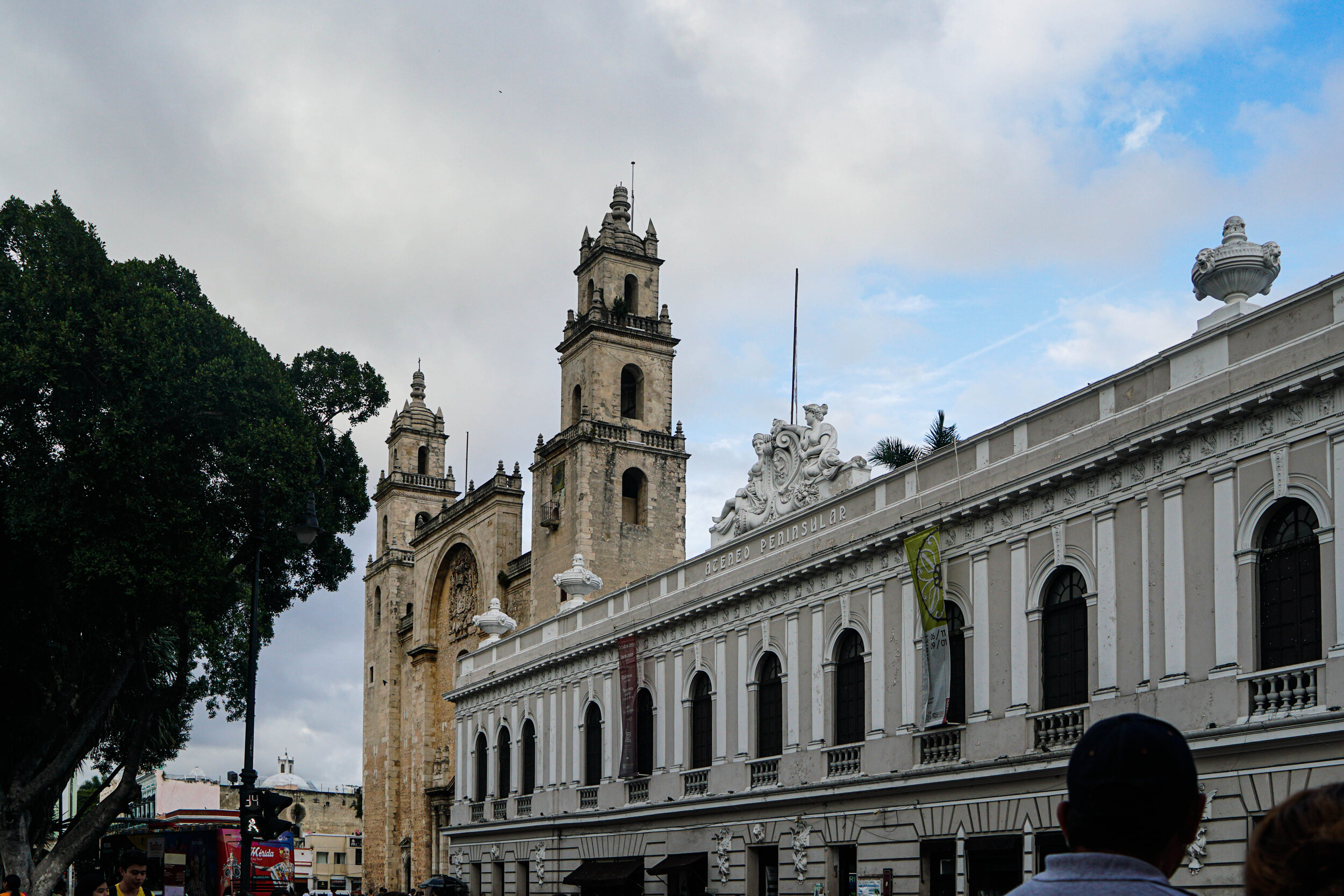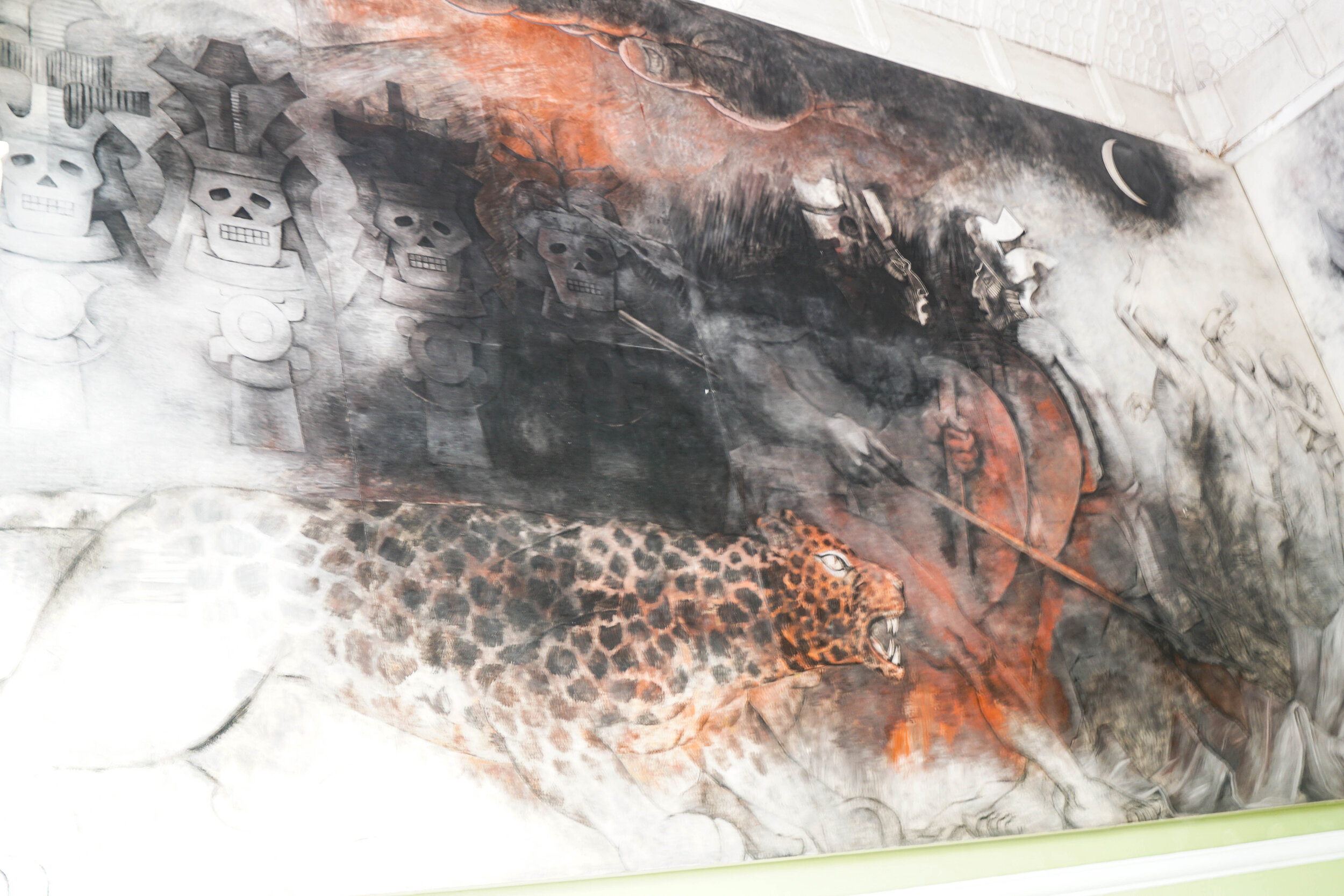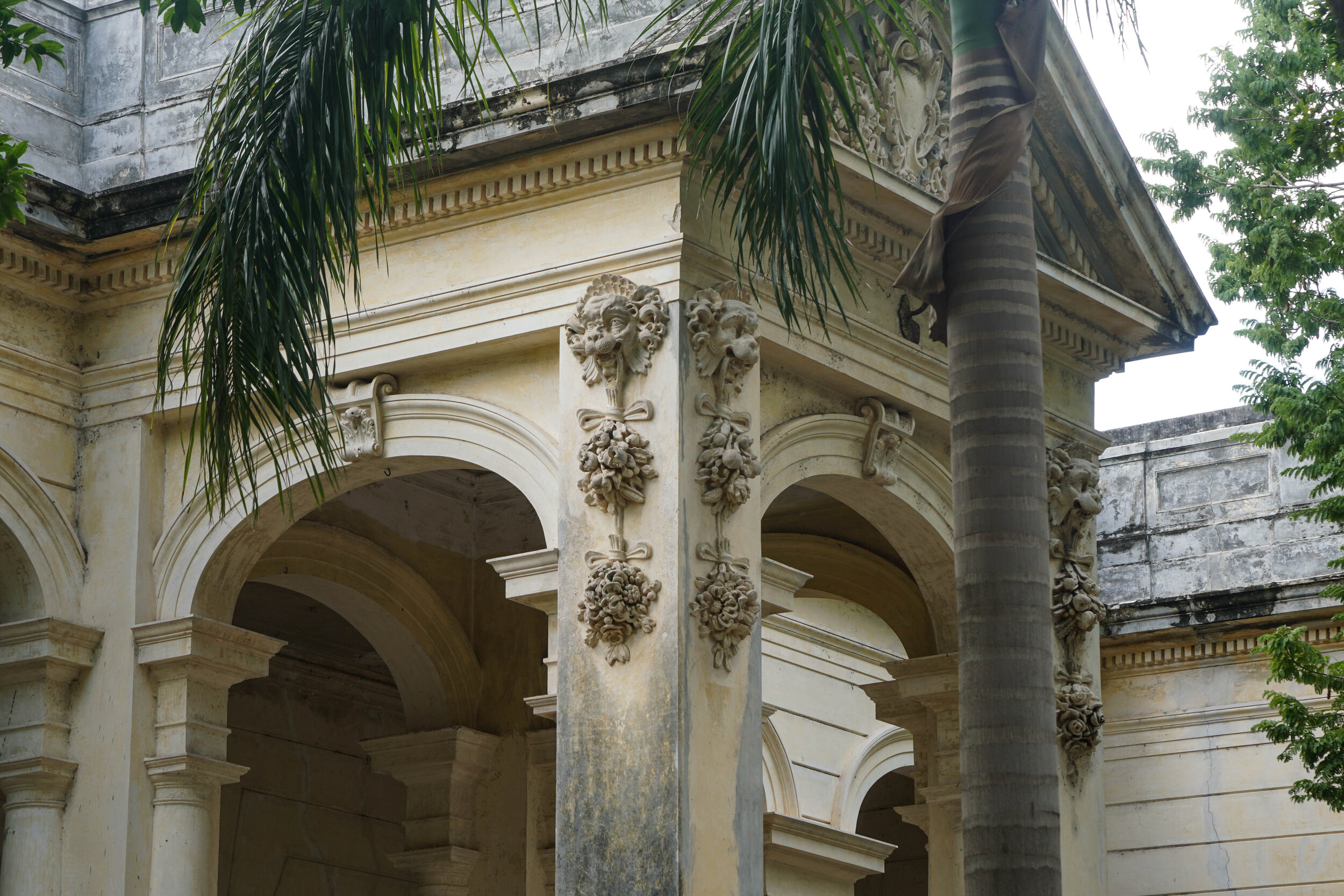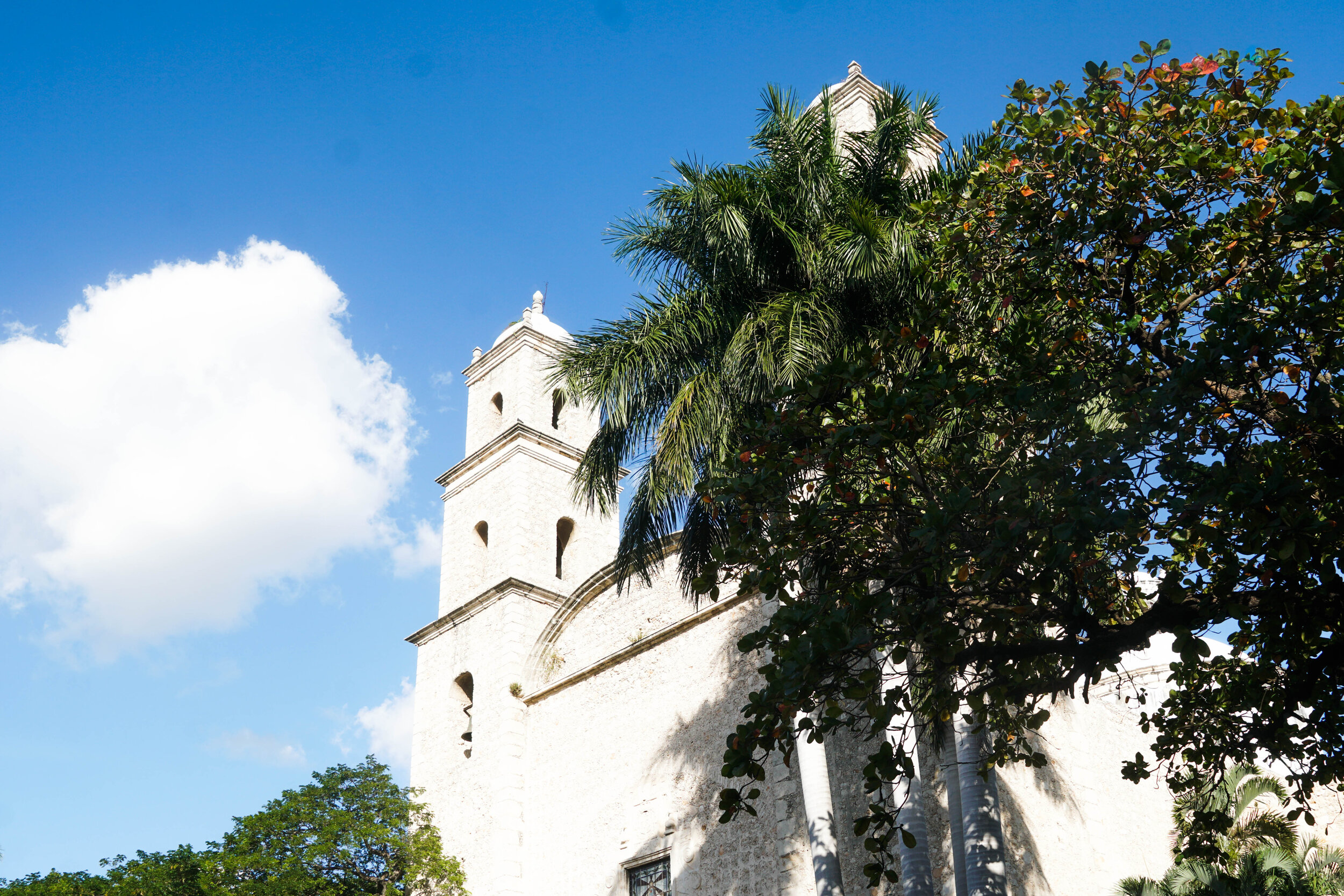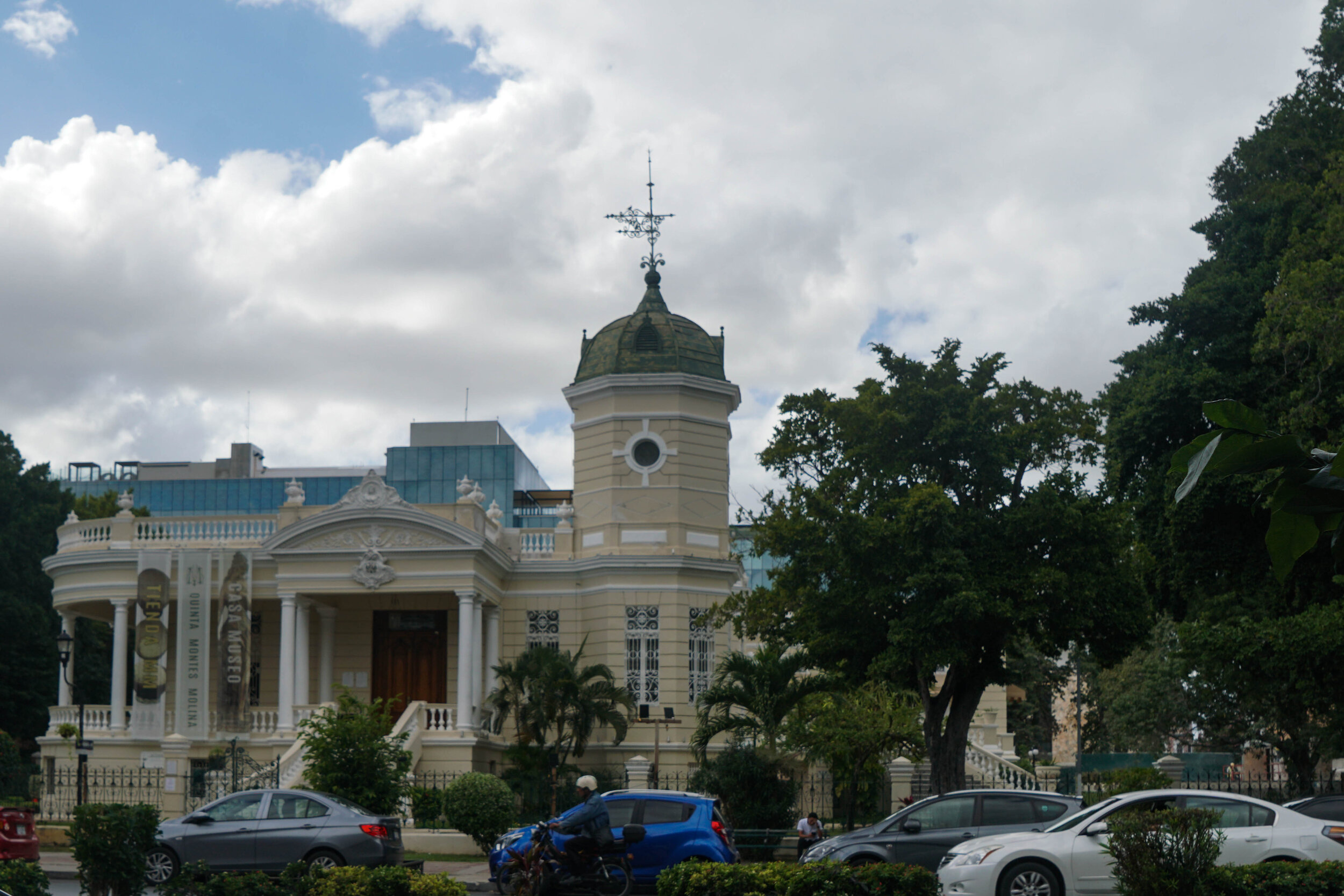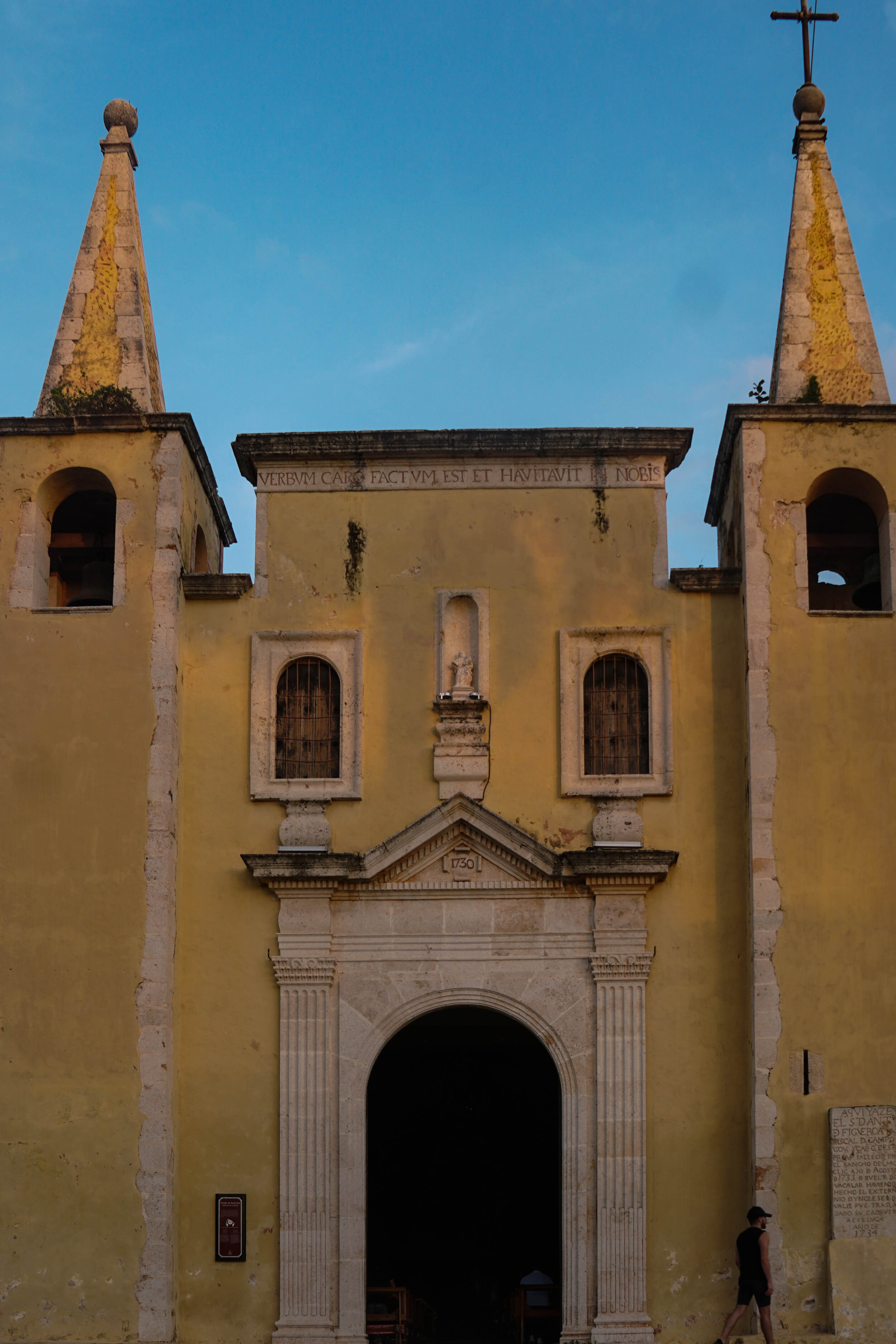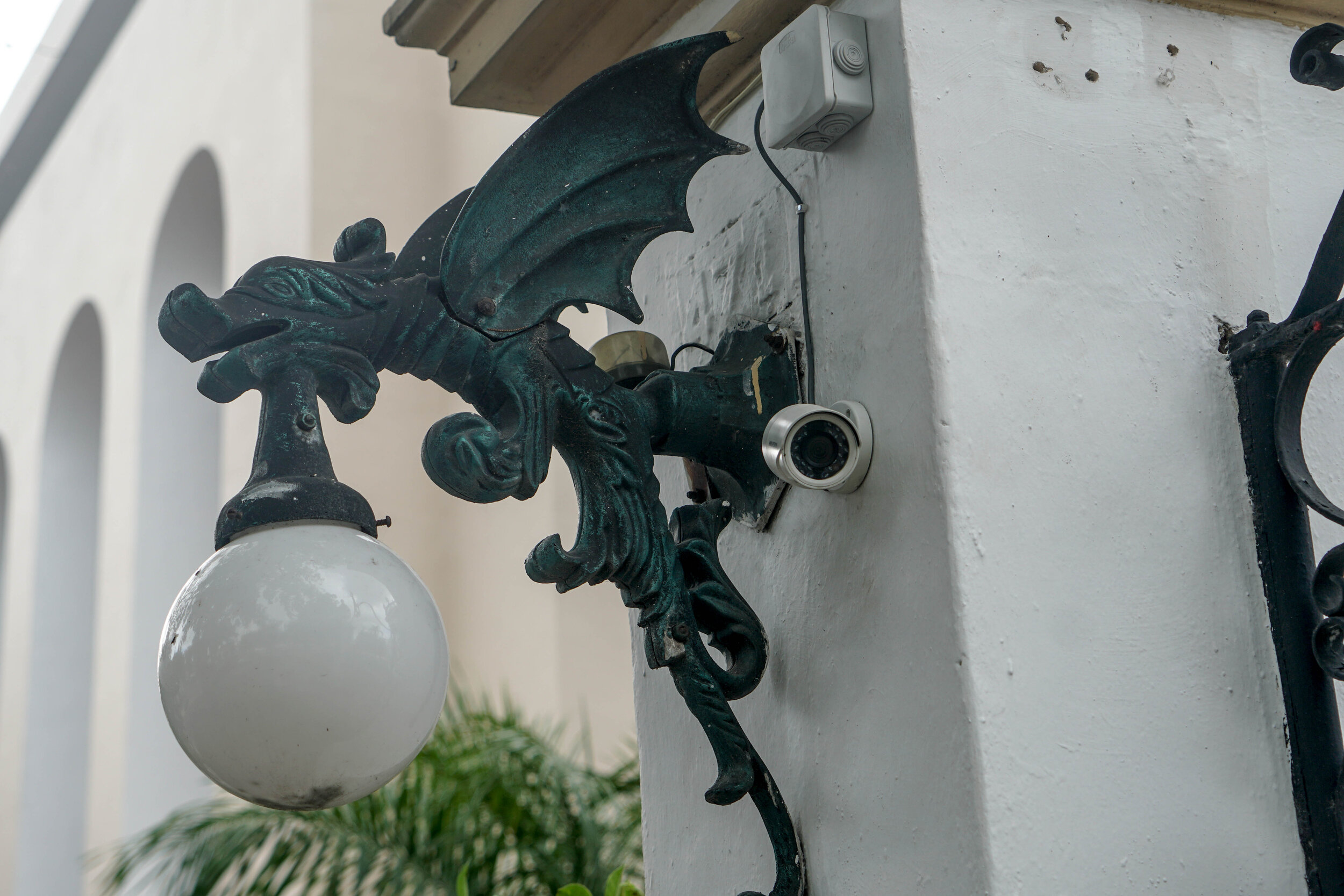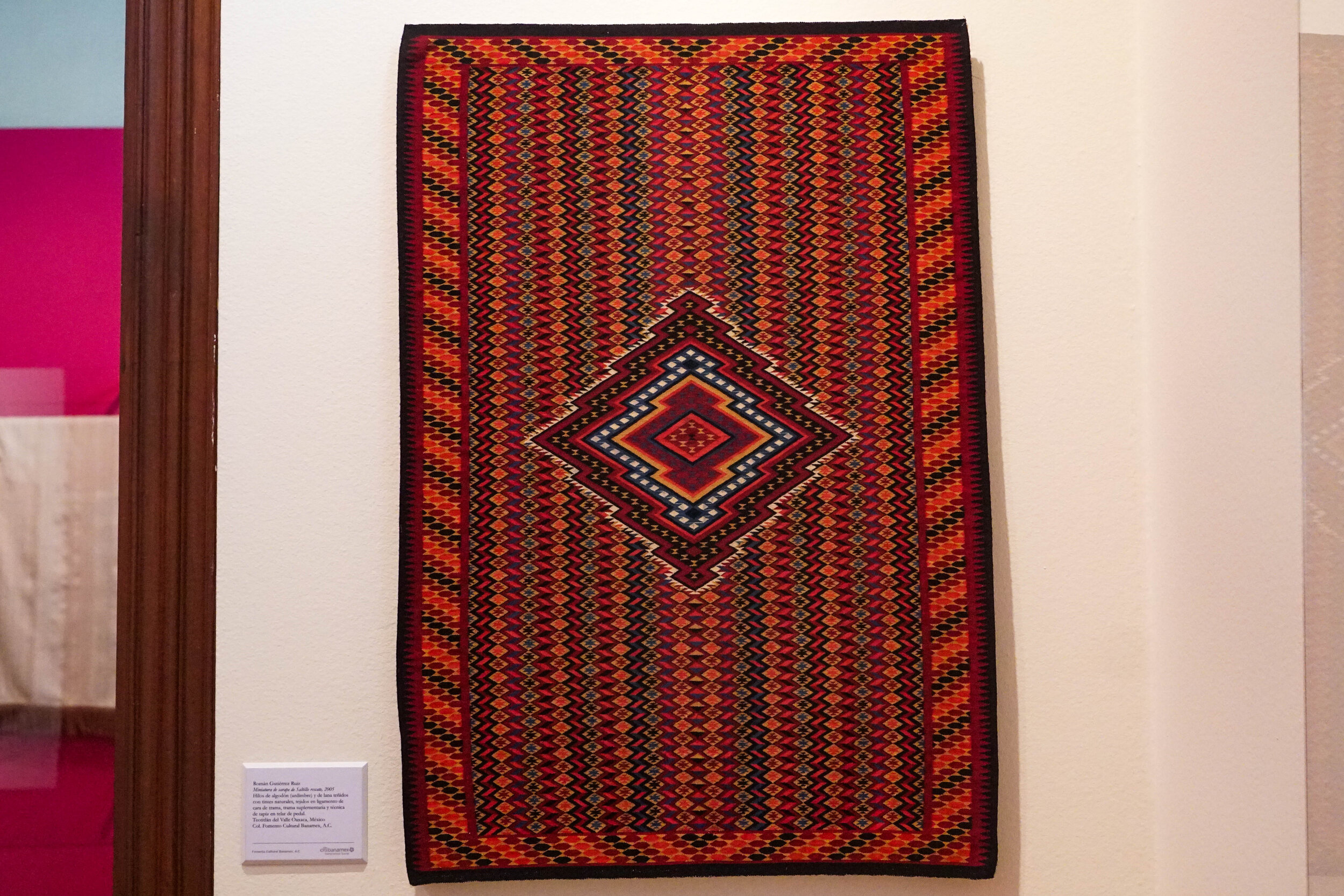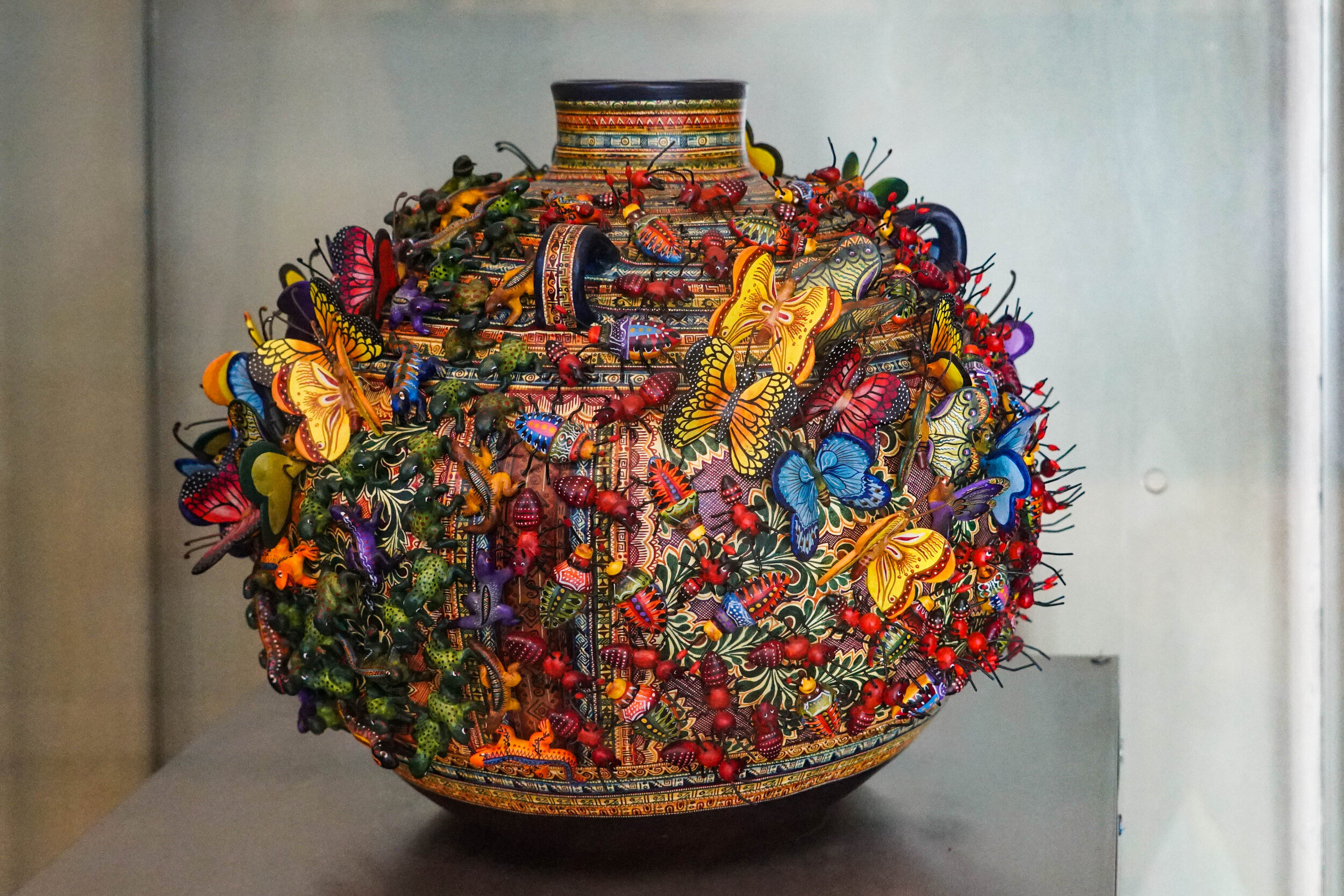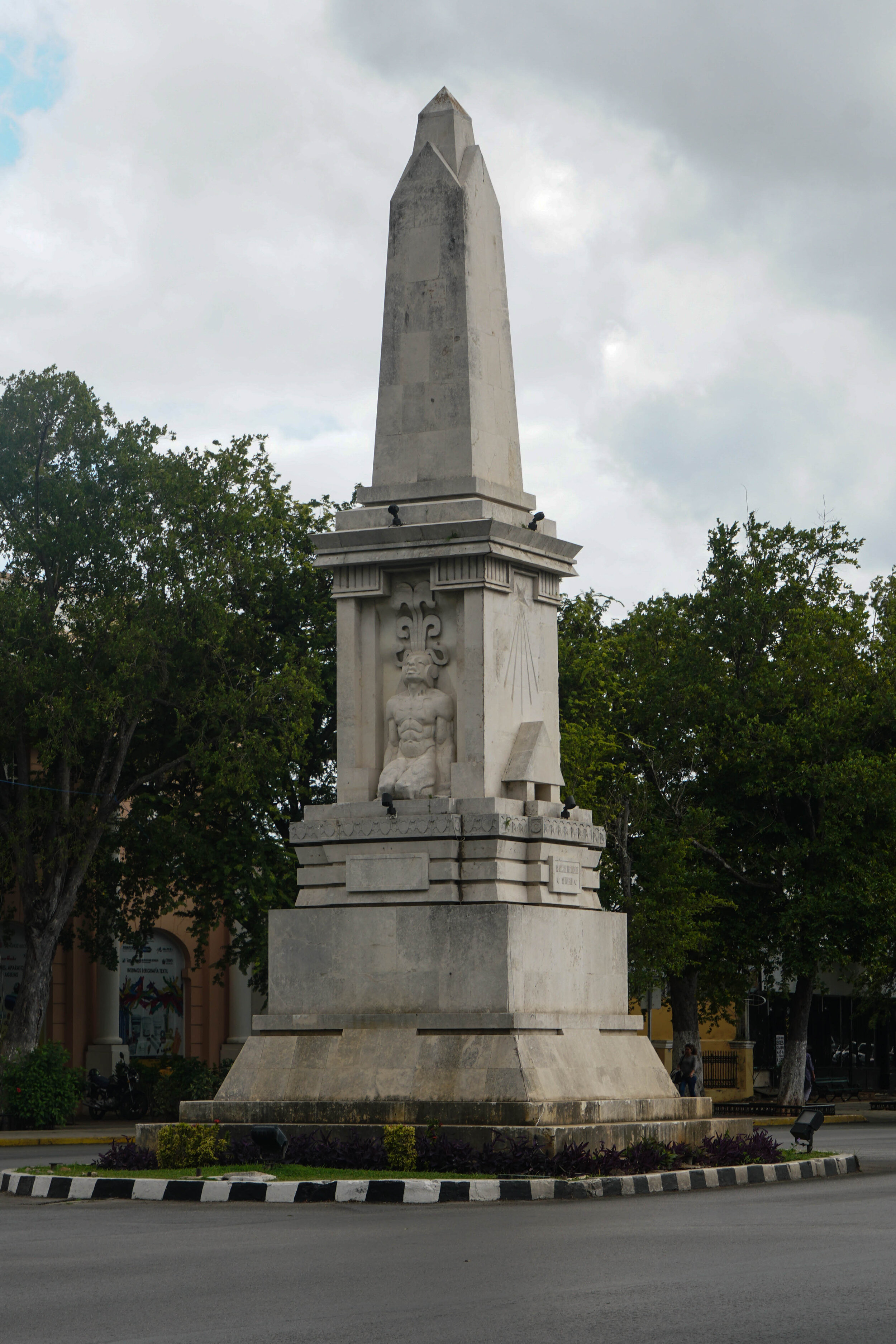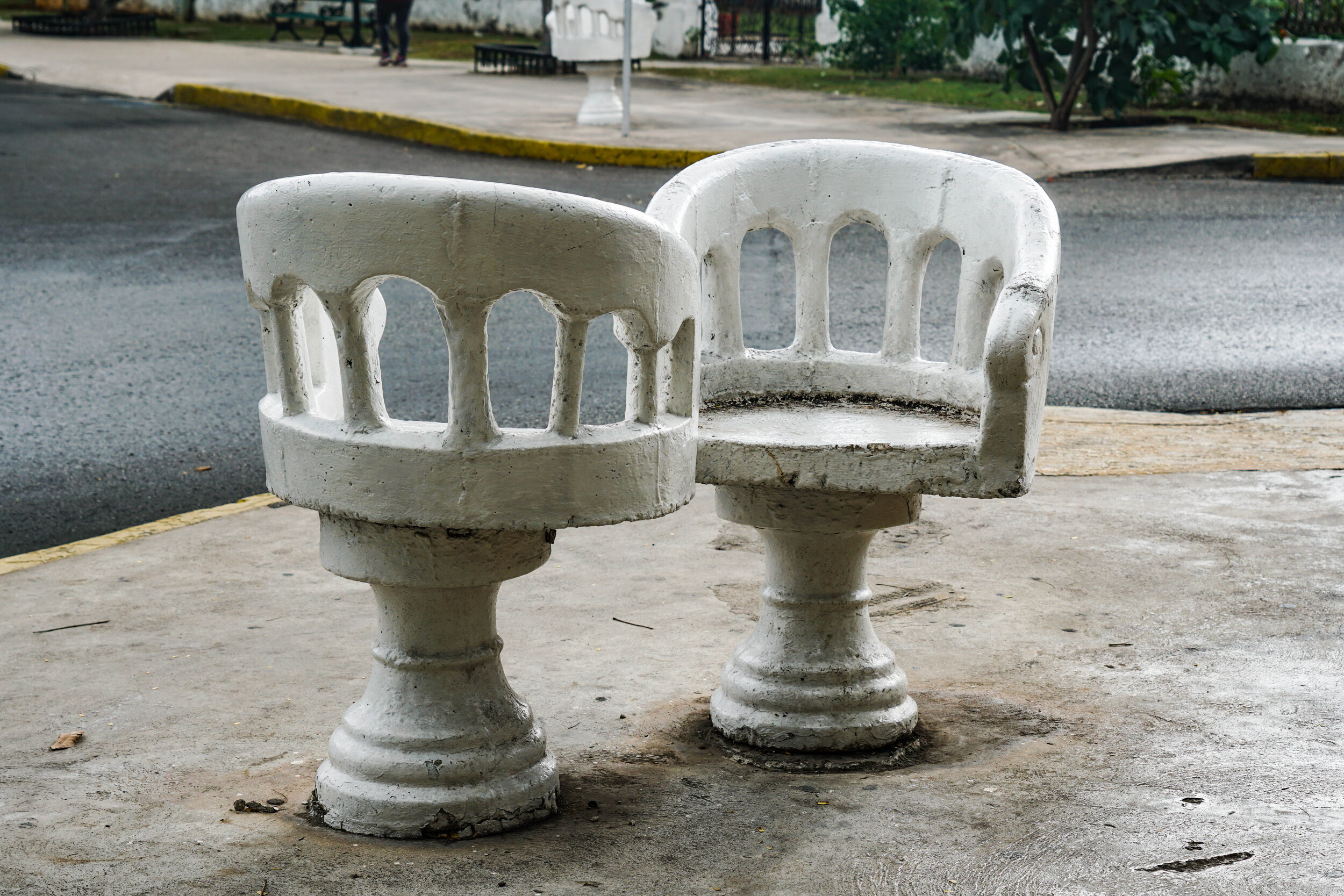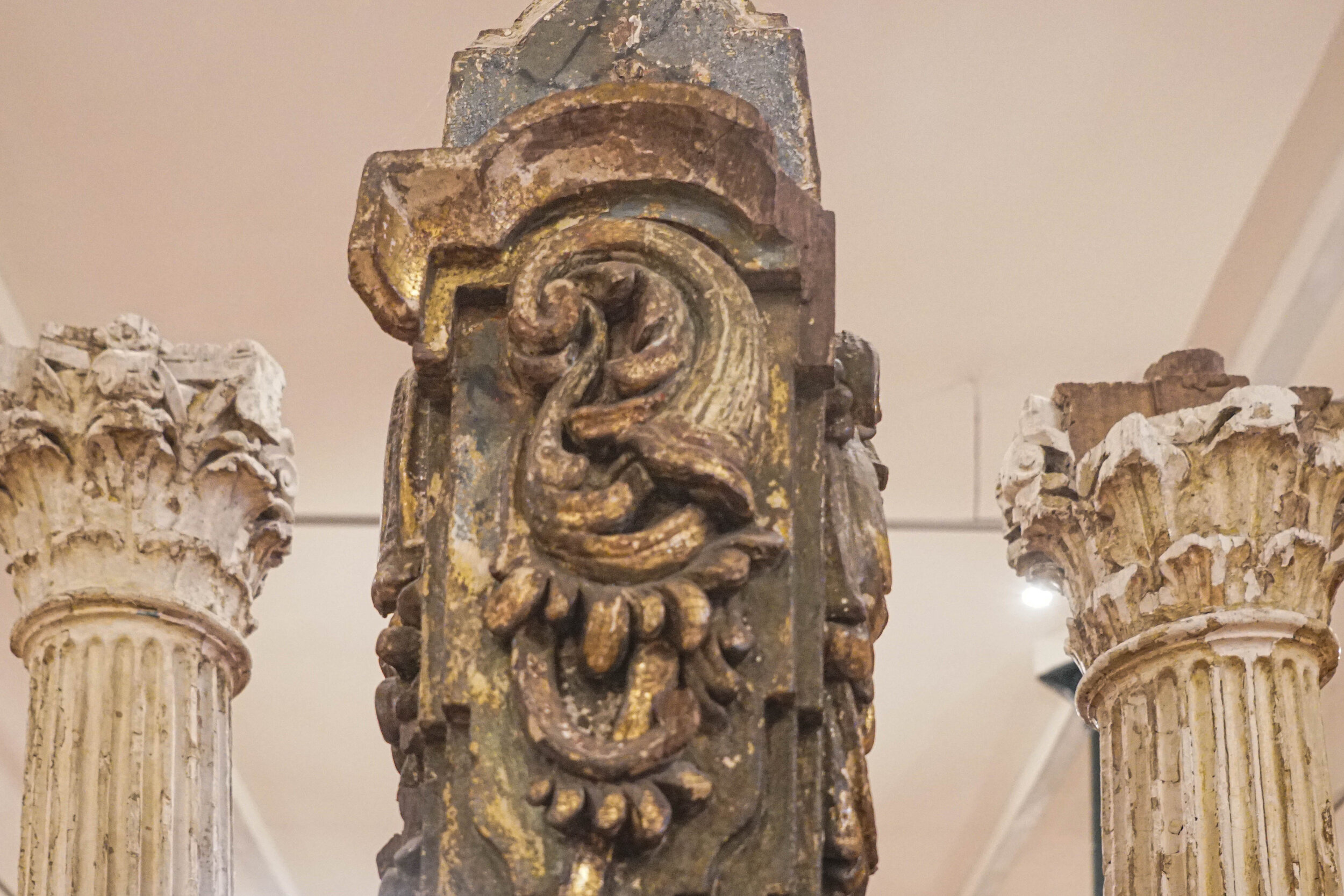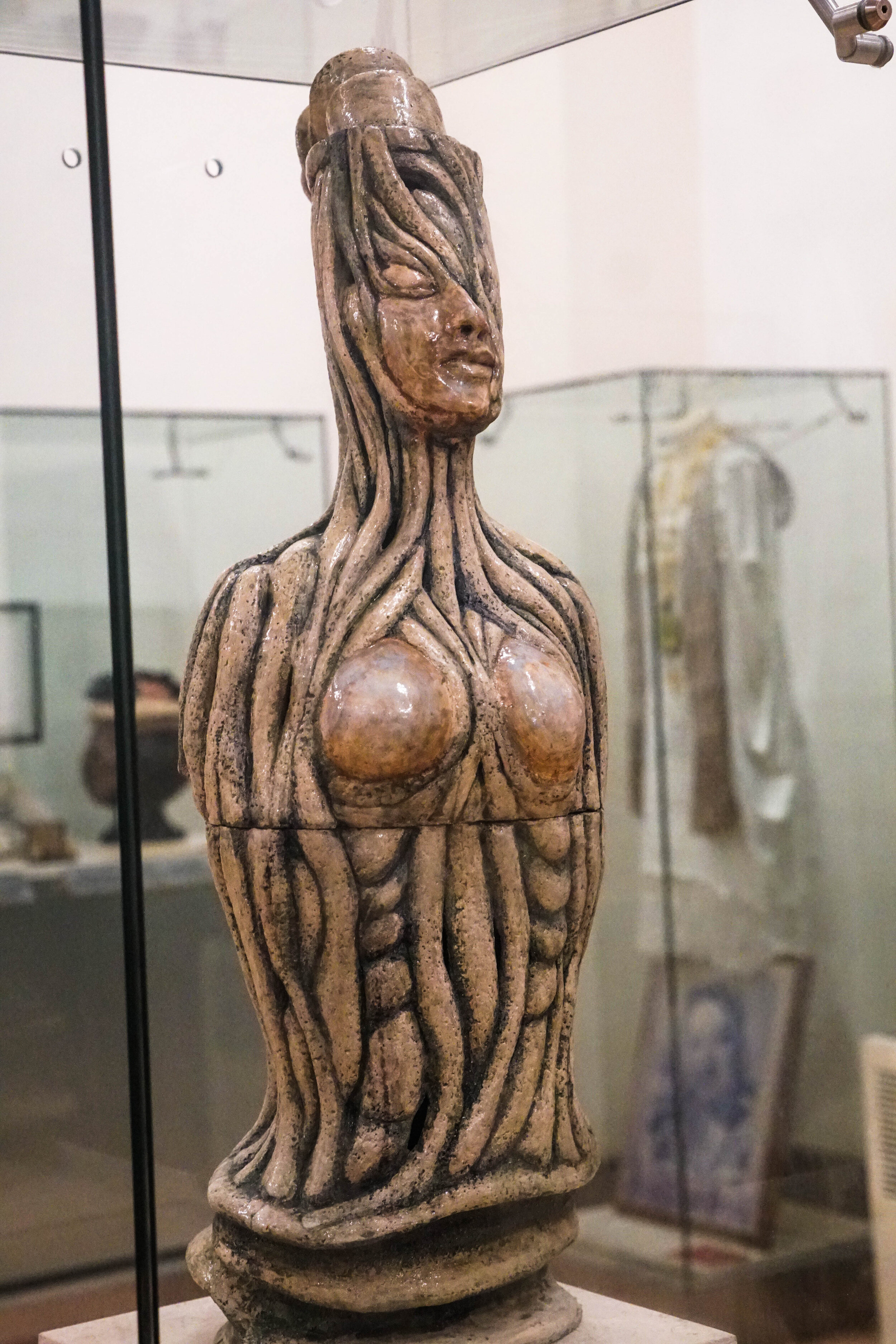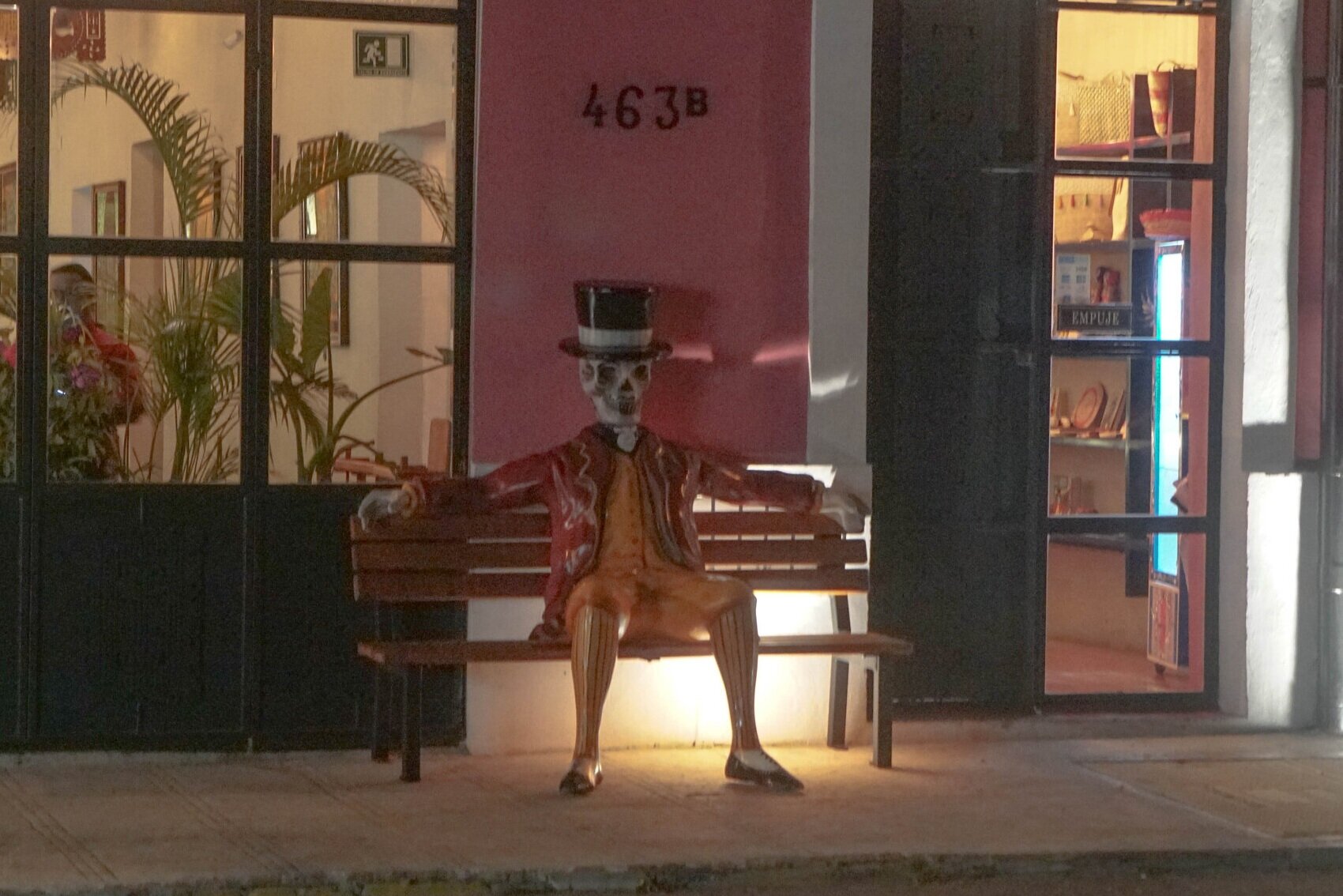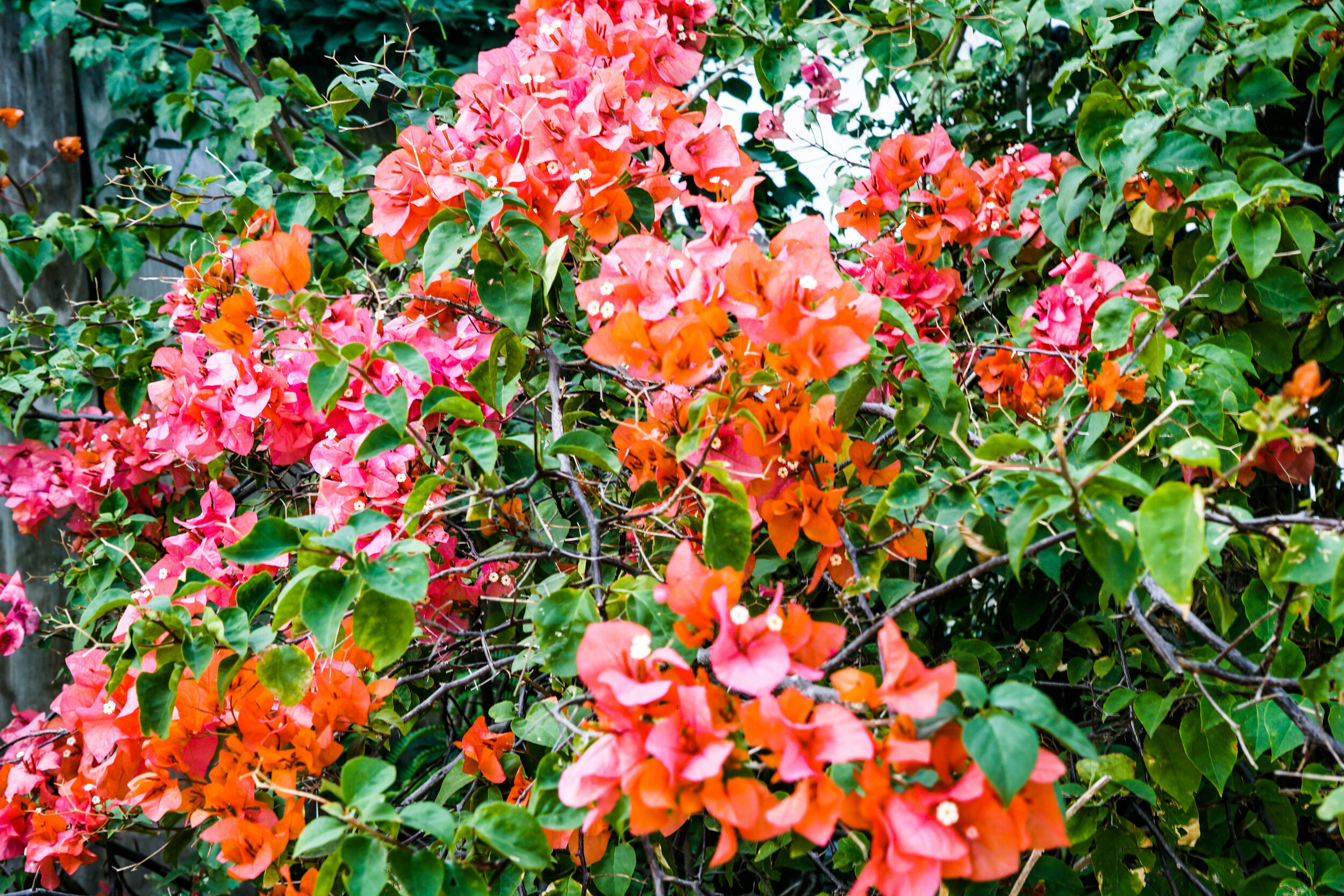The Vagabonds Return to Mexico
In the main plaza in Merida
We decided to return to Mexico this winter because we love Mexico, it’s warm and it’s easy to get back to the states from here. First stop, the Yucatan peninsula to visit some cities we hadn’t seen before, as well as to go to the beach. Merida, in the middle of the dry jungle, entertained us for two weeks. Warm, yes, but breezy and easy going at the same time. Our Airbnb was nice, although not as strategically located as we might have liked. Consequently, we stayed in on our first evening and visited the rooftop restaurants in our building. We feasted on delicious sushi at Hanaichi as we overlooked our new home for two weeks.
The next day we set off to find the main plaza by bus. The concierge in our building had no idea about the bus system, but the security guard helped us out. We boarded a SITUR bus right outside our building and kept on riding it for two weeks. At $.50 US per ride, it was inexpensive and we saw plenty of the city!
La Plaza Grande proved to be delightful, blessing the city with pretty landscaping, the cathedral and several 17 century buildings that continue to open their doors to municipal government and tourists. In addition, you can find a Tourist Info booth right on the plaza. The Casa de Montejo houses a bank and a museum that focuses on renovated Victorian furnishings in the home where the Montejo family lived for three centuries. Also located near the plaza is the Museo de la Ciudad, the museum of the history of the city. This museum is pretty old fashioned, but we enjoyed the building in which it is housed. The Catedral de San Ildefonso is a rather stodgy-looking church, both inside and out. Part of materials for the construction devolved from Maya/T’ho structures that were destroyed by the Spanish for the large limestone blocks. It is the oldest cathedral in the Spanish New World, completed in the 16th century. The inside of the church was sparsely decorated except for the enormous crucifix at the altar. This massive cross is supposed to be a symbol of the reconciliation between the Spanish and the Mayan people. I found that idea a bit confusing.
I was very excited about going to the Museo de Arte Popular—the folk art museum. That said, I was sorely disappointed that four out of the six exhibition rooms were closed for refurbishing. The temporary exhibit called Behind the Mask, Detras de Una Mascara, highlighted the folk art created in Oaxaca by the Angeles family. It is beautiful, fanciful and extremely detailed. I definitely will be visiting the Angeles workshop when we go to Oaxaca. Another day, we toured the Gran Museo del Mundo Maya, which highlights the culture of the Maya as well as presents artifacts. The exposition currently highlights the agriculture of this ancient people and how they have preserved the culture in recent years. (I now know more about corn that I ever thought I would, just saying.) We took an Uber to get there, $2.50, because we couldn’t figure out the bus. Great investment of our travel dollars as our Uber driver out maneuvered the traffic jams. Check out the amazing buttons from 400 AD and the beautiful hieroglyphic writing of the Maya.
Something always seems to be happening in Merida. Most nights of the week you can find live music in one of the parks. Santa Lucia park has Serentas Yucatecas, live traditional music, on Thursdays and plenty of good restaurants and shops in the vicinity. Twice we ambled down the Paseo de Montejo, an avenue developed in the late nineteenth century designed to resemble the Champs Elysee in Paris. It’s not Paris, but there are beautiful homes from that time period, of which a couple house museums. The Palacio Canton hosts a regional anthropology museum in a beautiful french style mansion. Look for courting chairs in the gallery below, the walking around gallery of Merida. The courting seats were in all of the parks and along the Paseo de Montejo.
A couple of things about Merida—it is safe, we were never afraid and it is very doable by bus. Each ride is $.50 and there are buses galore, with many companies operating the buses. We liked SITUR because it was very convenient to our apartment, but we hopped on others going the same direction and were able to navigate the stops with our cell phone. Most days, the buses run about every 10 minutes. Transpublico has maps of all of the routes. Food—I love Mexican food, both the real thing and Tex Mex. Yucatecan food is very regional and for the most part, I was not in love. It seemed underseasoned, although it was always accompanied by some very spicy salsa. I love the shrimp ceviche. We really enjoyed Oliva Kitchen and it’s sister restaurant Oliva Patio. Skip Mercado 60, it doesn’t measure up to any of the other multi-kitchen spaces that we have been to in Mexico and other countries.
While we were in Merida, we made several day trips. I’ll recount those adventures next time. Hasta la vista, Merida! We’re off to Valladolid.


